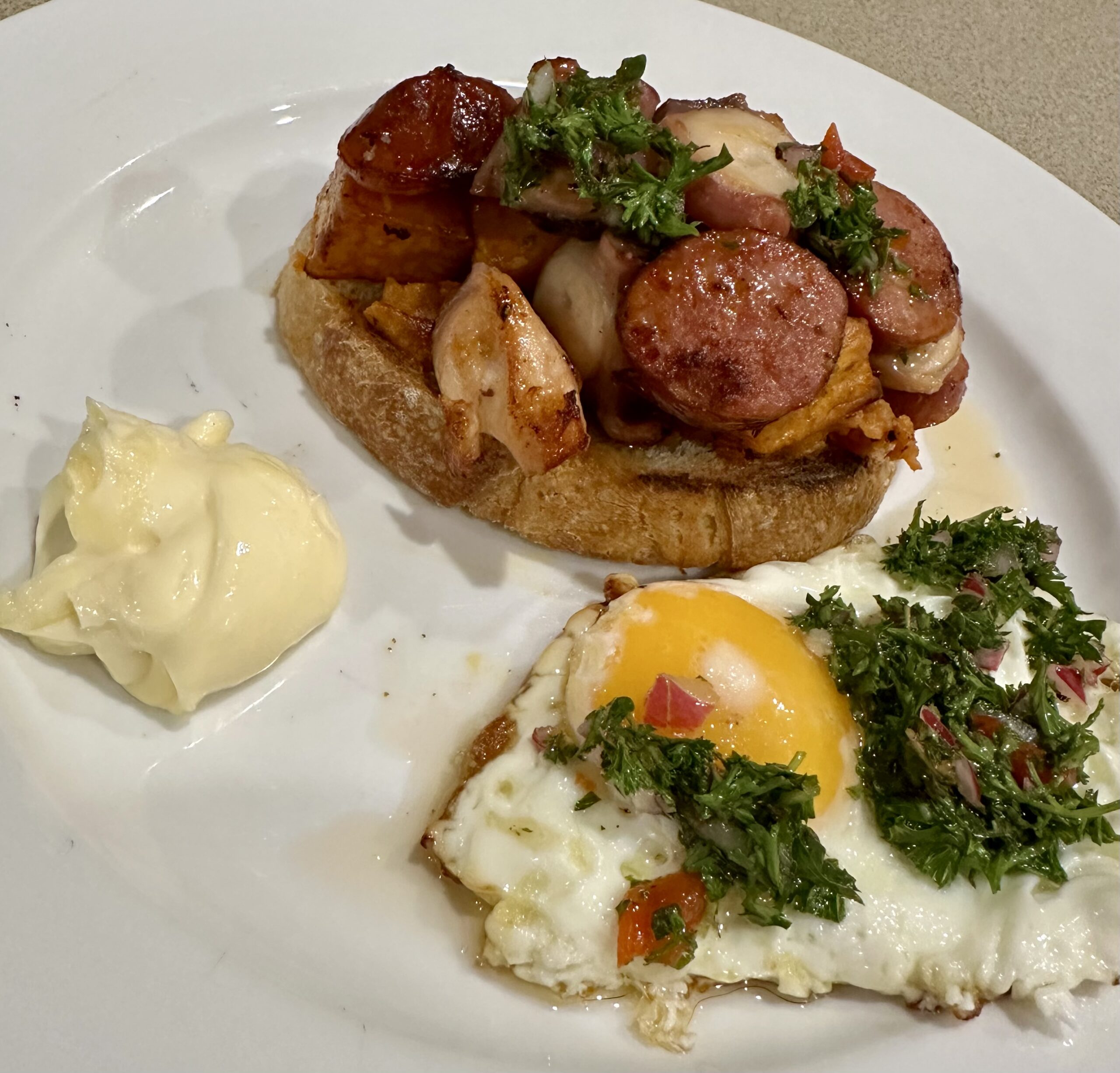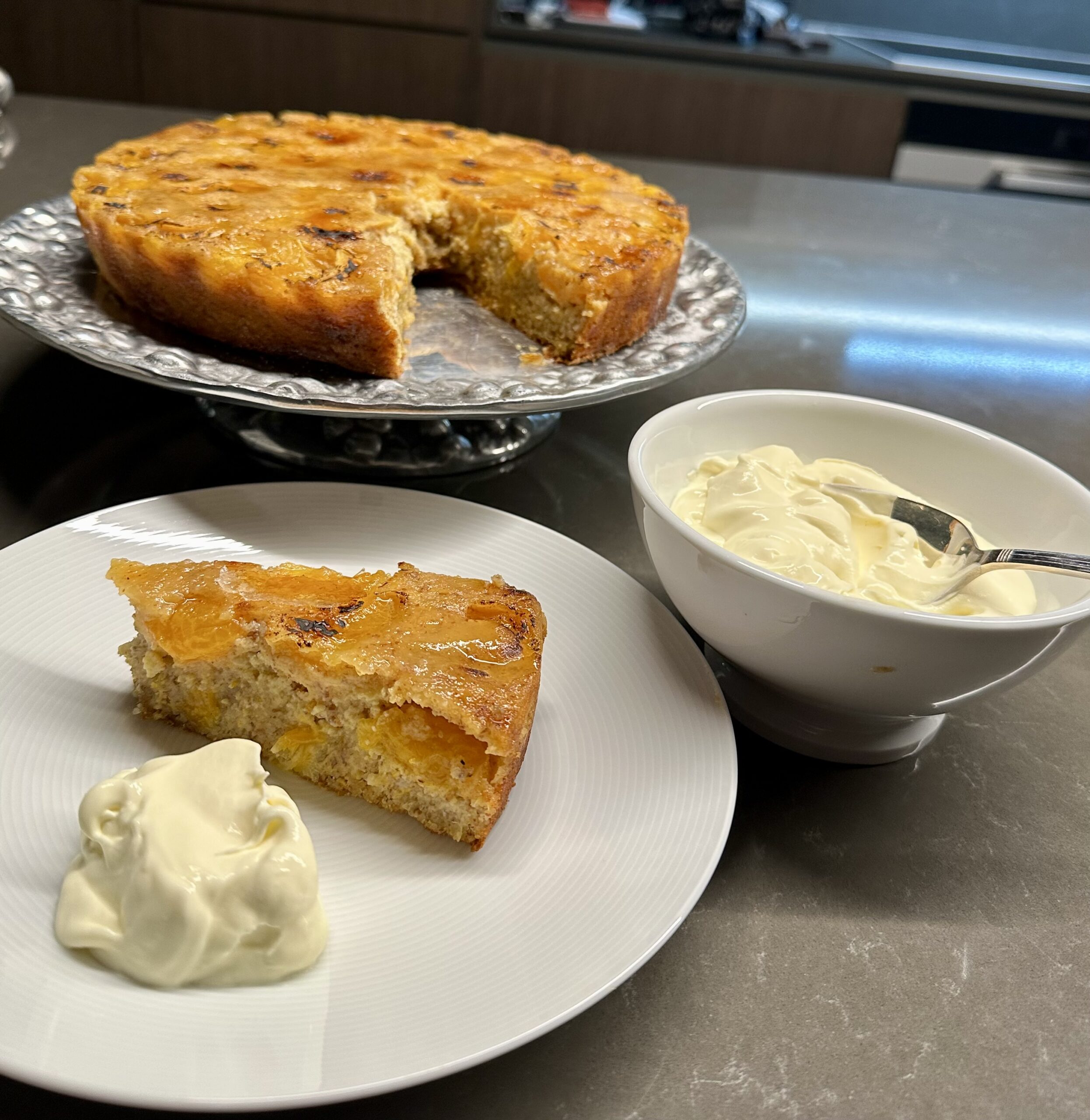This recipe was inspired by a dish being served by my favourite lunch time bistro in Canberra,
Deakin & Me is in my suburb which is called Deakin, and it ticks all the boxes. The food is interesting, healthy and delicious. The staff are friendly and efficient and they don’t mind splitting the bill for groups. They only do breakfast, brunch and lunch and the place is always full.
I didn’t order this dish, but one of my friends sitting next to me did. I looked delicious and she confirmed that it was. I made a note of the ingredients in order to make it at home.
Cooked, vacuum packed octopus can be found in Costco and I used sweet potatoes instead of ordinary potatoes. Chimichurri is a South American salsa. Any leftover can be served to add a bit of zing to steak, chicken, fish or fried eggs.
 1 sweet potato (see variations)
1 sweet potato (see variations)
2 tsp paprika
200g cooked octopus, sliced
1 chorizo sausage, sliced
4 slices sourdough bread, lightly toasted
4 eggs
Olive oil
Aioli:
½ cup mayonnaise (preferably home made)
2-3 tsp lemon juice
1 clove garlic, crushed
Chimichurri:
2 Tbs finely chopped parsley
1 small red chilli, very finely diced (with or without the seeds)
½ cup olive oil
2 Tbs red wine vinegar
Salt and pepper to taste
1 clove garlic, crushed
1 tsp dried oregano or 1 Tbs fresh oregano or marjoram, chopped
¼ of a red onion, finely diced
Pinch of sugar
Make the Aioli by mixing the ingredients together. Make the Chimichurri by mixing the ingredients together. Don’t use a food processor you will end up with mush.
Peel the sweet potato and cut it into 2cm cubes. Mix with a tablespoon of olive oil, the paprika and salt to taste. Cook in an air fryer or a hot oven (spread out on a paper lined tray) until lightly browned and cooked.
Heat a little olive oil in a large frying pan. Add the octopus and chorizo and stir fry for 5-8 minutes or until the chorizo is lightly browned. Add some of the sweet potato cubes so there’s about the same amount of them as of the chorizo and octopus. You will have some sweet potato left over. Stir for a minute or two to combine.
Meanwhile, in another frying pan, fry the eggs in a little olive oil (serve them sunny side up) and toast the sourdough.
Divide the octopus, chorizo and sweet potato amongst the slices of toast, with the fried egg on top or on the side. Add a good dollop of aioli and a few spoonfuls of chimichurri to the plates.
Serve immediately.
Serves 4
Variations: use cooked ordinary potatoes cut into chunks instead of sweet potatoes.







 Tortilla French Toasts:
Tortilla French Toasts:

